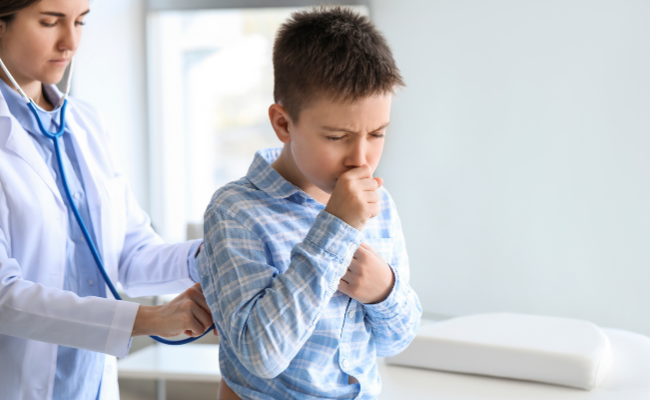How to Treat Pertussis?
- December 21, 2023
- No Comments

What is Pertussis?
Pertussis, commonly referred to as whooping cough, is an extremely contagious respiratory infection resulting from the bacterium Bordetella pertussis. This bacterial infection significantly impacts the respiratory system, leading to intense coughing fits marked by a distinctive "whooping" sound during inhalation. The condition is particularly perilous for infants, young children, and individuals with compromised immune systems. The symptoms of whooping cough include prolonged and recurring coughing fits, with effects persisting for weeks or even months after the illness's onset.
In the case of infants affected by pertussis, they may present breathing difficulties rather than the typical coughing spells. These challenges may manifest as conditions such as apnea, involving pauses in breathing. It is crucial to recognize that whooping cough poses a substantial threat to infants, potentially resulting in severe and life-threatening complications.
Why is Pertussis a Concern?
Pertussis poses a significant health concern due to its ability to spread rapidly within communities and its potential for severe complications, especially in vulnerable populations. Infants, in particular, face an increased risk of complications, including pneumonia, seizures, and in rare cases, death. Adults and adolescents can also contract pertussis, and while their symptoms may be milder, they can still act as carriers, unknowingly transmitting the bacteria to more susceptible individuals.
How Does Pertussis Spread?
Pertussis spreads through respiratory droplets when an infected person coughs or sneezes. The bacteria can survive on surfaces for a short period, contributing to its contagious nature. Infants and young children are often exposed to pertussis by older family members or caregivers who may not display typical symptoms. The initial symptoms resemble those of a common cold, making early detection challenging.
Treatment Solutions for Pertussis
- Antibiotics: The primary treatment for pertussis involves the use of antibiotics, typically macrolides such as azithromycin or clarithromycin. These medications help reduce the severity and duration of symptoms, as well as limit the spread of the bacteria. Early intervention with antibiotics is crucial, especially in preventing complications and controlling the transmission of the disease.
- Isolation and Quarantine: Infected individuals, particularly those diagnosed with pertussis, should be isolated to prevent the spread of the bacteria. Quarantine measures are essential, especially for those in close contact with susceptible populations, such as infants and pregnant women. Timely identification and isolation can significantly reduce the risk of secondary infections.
- Vaccination: Prevention through vaccination is a key component in the management of pertussis. The pertussis vaccine is often administered as part of the combination vaccine DTaP (diphtheria, tetanus, and acellular pertussis) for infants and young children. Adolescents and adults are recommended to receive the Tdap (tetanus, diphtheria, and acellular pertussis) booster to maintain immunity. Vaccination not only protects individuals from severe illness but also contributes to community immunity, reducing the overall incidence of pertussis.
- Supportive Care: In addition to antibiotics, supportive care is essential for managing pertussis symptoms. Adequate rest, hydration, and a humidified environment can help alleviate coughing fits and improve overall comfort during the recovery period. Over-the-counter cough medications may provide some relief, but their use should be discussed with a healthcare professional, especially in children.
Benefits of Treating Pertussis
- Preventing Complications: Timely and effective treatment of pertussis can significantly reduce the risk of complications, particularly in infants and young children. Antibiotics help prevent the progression of the infection to more severe respiratory issues, such as pneumonia, and decrease the likelihood of associated complications like seizures.
- Limiting Transmission: Prompt treatment with antibiotics not only benefits the infected individual but also plays a crucial role in limiting the spread of pertussis within communities. Isolation measures and targeted antibiotic use help break the chain of transmission, preventing new cases and protecting vulnerable populations.
- Protecting the Vulnerable: Infants, pregnant women, and individuals with compromised immune systems are at higher risk of severe pertussis-related complications. By treating pertussis promptly, healthcare providers can protect these vulnerable populations and reduce the impact of the disease on their health.
- Maintaining Community Immunity: Vaccination, as part of pertussis management, not only protects individuals but also contributes to the concept of herd immunity. By increasing the overall immunity within a community, the spread of pertussis is slowed down, providing indirect protection to those who may be more susceptible to severe outcomes.
Comments (0)